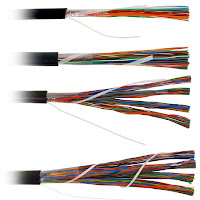BASIC OF SWITCH
1.Switch is an intelligent device.
2.Switches and Bridges are similar devices used on different mediums.
3.Switch are used on twisted pair and fibre medium whereas bridges are used on thick wire and thin wire medium.
4.switches and bridges are interchangable terms.
5.switch is layer 2 device.
6.switch takes forwarding decision on the basis of MAC table.
7.MAC table is layer 2 table and hence switch is layer 2 device.
SWITCH OPERATION-
 |
SWITCH OPERATION |
- Whenever a switch receives a frame on port ,it will read source MAC address and make an entry of this MAC address in its own MAC table against the port number on which it was received.
- After reading source MAC address, switch will read destination MAC address and refer MAC table to take forwarding decisions.
- If destination MAC address is listed in MAC table,switch will forward the frame to the appropriate port only and not to all ports.unlike a hub which will forward the frame to all ports.
- If destination MAC address is listed in MAC table,switch will create multiple copies of frame and forward it to all ports.
- If switch receives a broadcast frame,switch will create multiple copies of broadcast frame and forward it to all ports.
- Switch does not create a broadcast but it will forward a broadcast receive on a port.
- If source MAC address and destination MAC address are on two different ports,switch will create a logical bridge between the source port and destination port and forward the frame to destination port only.
- If source MAC address and destination MAC address are on the same port,switch will discard/drop/block the frame.
- Switch allows simultaneous communication bandwidth multiple communicating pairs connected on different ports.
MAC TABLE/CAM TABLE(Content Addressable Memory)-
- MAC Table is a layer of 2 table.
- MAC Table can be populated dynamically via self learning or statically by an Admin.
- To keep MAC Table concise and precise, MAC entries have to be monitored and state entries have to be deleted.
- Any entries not referred or used for specific period of time is known as state entry.
- SWITCH will remove state entries from MAC Table.
- State entry could be 30 minutes or based on manufacturer.
- Removal of state entries is essential to keep MAC Table concise and precise.
- Every port of switch has it's own dedicated bandwidth.
- SWITCH is dedicated bandwidth device.
- Every port of switch is member of a separate collision domain.
- SWITCH is a multiple collision domain device.
- Every port of switch is member of the same broadcast domain.
- SWITCH is a single broadcast domain device.
- SWITCH will perform layer 2 as well as layer 1 functions which is taking forwarding decision on the basis of layer 2 address as well as boosting the signal when transmitting out of port.









